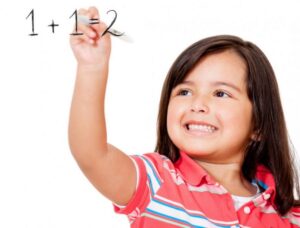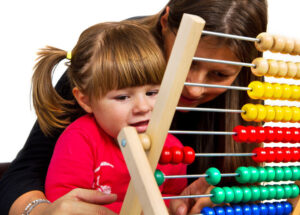When children are young, parents often use improvised media,
such as toys or fruit to teach a child the basics of math.
Just learning read abacus is not enough, you need to teach your child to think.
Try to work with your child to find interesting objects for him to practice counting. These can be buttons, pebbles, shells, small toys.
A parent becomes the child’s first teacher. When children are young, parents often use improvised objects, such as toys or fruit, to teach their child the basics of math. Just learning numbers is not enough; you need to teach your baby to think.
In order for a child to develop a proper awareness of what numbers are and how to work with them and what unscramble puzzle parents should keep in mind a few important principles in the process of teaching counting:
in the process of teaching counting:
1. Consistency .
Children should clearly understand that no matter what number they start with, the counting system has a sequence.
2. Number
It is necessary to explain to a child that a number still represents not only a number, a designation, but also a certain number of objects. Regardless of the placement and movement of these objects, their number remains the same. It is also necessary to practice counting from left to right, from bottom to top so that the child understands that the order does not matter.
3. abstraction.
The child should form an idea that it is possible to count not only physical objects – cups, spoons, candy, anything one can touch. It is also possible to count dreams, ideas, desires. They are not visible; they are in our heads, but one can count them, too.
4. combining
Our system of counting consists of 9 digits which are further combined to represent another number. After 9 comes 10. It should be explained to the child that the one is used to make the number 10, 100, 1000, etc. appear. Very often children have problems with this point.
Start to teach your child to count when he himself wants to, and in no case can you impose it. Some parents teach the basics of math from an early age. For example, Mom can show a child the number of one-year-olds on their fingers, and hearing the same question: “How many one-year-olds are you,” the baby should show them on their fingers. If he does not show, do not get upset, he will do it, but later, you should often repeat such manipulations. When he does it correctly, you need to praise him by smiling and saying that he is doing it right.
How to teach a child to count?
At an early age you should model special situations in which a child can learn to count. When you feed your child from a spoon, it is necessary to sound out the process: “One spoon, two spoons…”. While drawing, give your child crayons and say, “This is one crayon, and this is two crayons…”. Make counting an integral part of your baby’s life, count steps, pigeons on a balcony, apples on a tree, etc. Then the child will perceive it not as a teaching, but as a normal game, and the material will be absorbed at a subconscious level.
Try to make such activities not very long, so that the child will not get tired. Ten minutes is enough for a child to have time to master new learning material. Also, do not forget that it is necessary to be creative and original approach to interest the baby. When there is an opportunity and it is not a threat to the child, allow him to touch the objects that you are counting.
Another of the most important principles is regularity learning area of a triangle for kids. It is on regularity that the quality of your efforts depends. When your child is drawing, ask him to hand you one pencil. If he does not answer, take one pencil and say, “This is one pencil. Repeat this manipulation until you make it automatic. When your child easily copes with your request, make the task more difficult, asking him or her to give you two pencils, then three and so on. Such exercises can be carried out using a variety of household items.
You will achieve results not when the child learns all the numbers, but only when it will be enthusiastic about math, and with great desire and pleasure can think and count.
